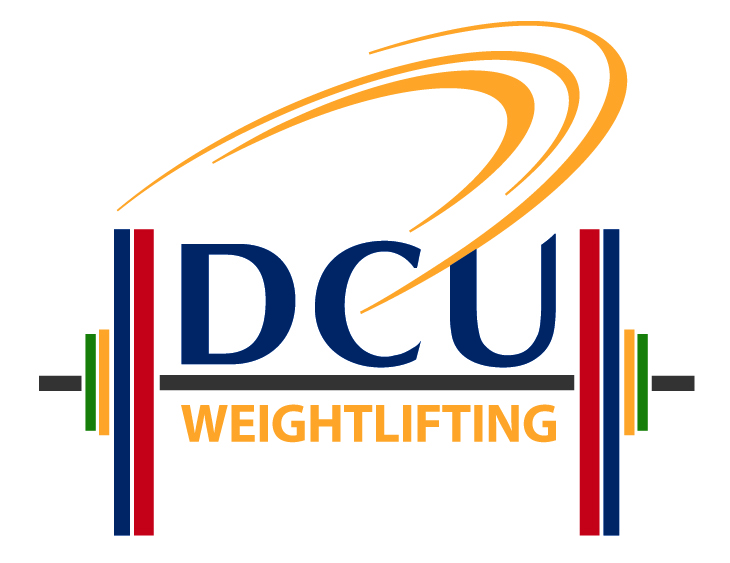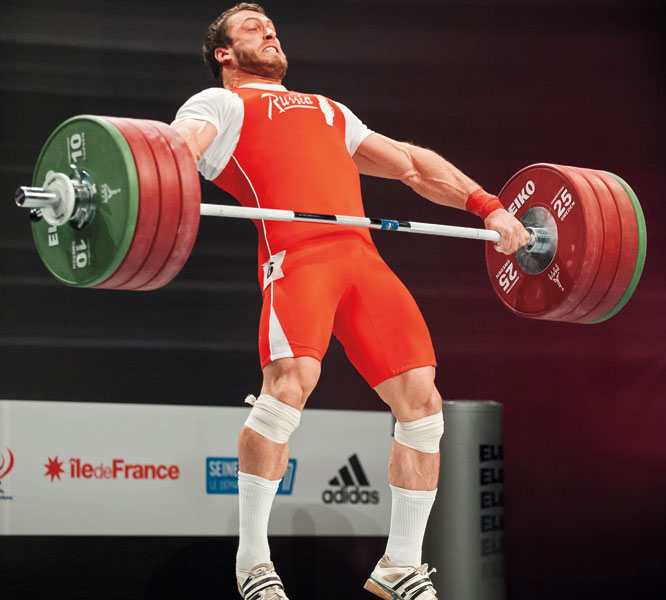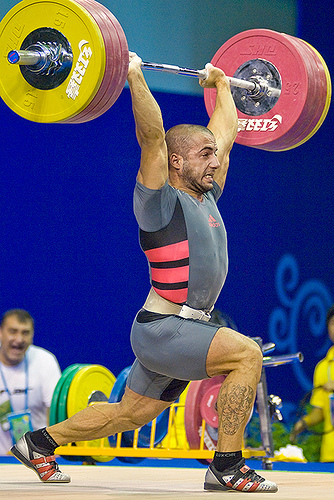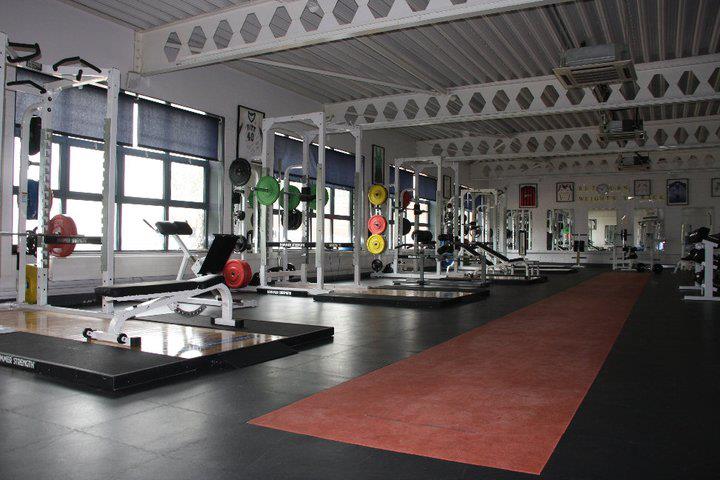
Bio
DCU Weightlifting Club was set up in 2009 and is one of Ireland's first university weightlifting clubs. Over the years the club has grown from strength to strength, and it is now one of the best equipped clubs in the country. Members train in DCU's High Performance Gym alongside elite athletes, GAA teams and more. This not only provides an excellent training environment, but creates great exposure for the sport. The club holds the Irish Intervarsities every year in March, which has improved awareness of weightlifting within DCU and the wider community.The club currently has a dedicated group of athletes that continue to grow the club and train hard for various national competitions.

The lifts
Olympic weightlifting primarily consists of two competition lifts; the snatch and clean and jerk. What follows is a brief description of the two competition competition lifts. Weightlifters also use some assistance exercises such as power snatches, power cleans and pulls. The most common assistance exercises, and probably the only essential ones as well as the competition lifts, are back squats and front squats. If you've never heard of squats, go quickly and google them, then come back, they're awesome!
Snatch
The snatch always takes place first in competition and so it almost always takes place first in training. It is also done first because it is a very technical lift and requires somewhat less strength than the clean and jerk. The snatch is performed in one quick movement lifting the bar from the floor to overhead. To successfully complete the lift in competition the bar must be locked out overhead without any bending or pressing out of the arms. The bar begins on the floor and is held in a wide grip. The athlete will lift the bar form the floor in a controlled manner keeping it close to the legs. As the bar is moved toward the hip, it is accelerated until the hips extend forcefully and the athlete pulls him or herself under the bar locking the bar over head. In the bottom position the athlete will be in a deep squat position and from there, after stabilising the themselves and the bar, they will stand up to complete the lift. Throughout this movement the back must remain straight.
Clean and Jerk
The clean and jerk takes place after the snatch and is composed of two distinct movements; the aforementioned clean (1) and jerk(2). In the clean the bar is lifted from the floor to the shoulders followed by the jerk in which the bar is lifted from the shoulders to overhead. Just like the snatch the bar must be locked out overhead without any bending or pressing out of the arms. The grip for the clean is narrower than the snatch, maybe shoulder width or slightly wider. The bar must again accelerated from the floor in a similar manner to the snatch until the hips extend and the bar is racked on the shoulders. Again the athlete will be in a deep squat position but this time with the bar on the shoulders and the elbows pointing forward. This position is the same as a front squat and from here the athlete stands up. Now the jerk phase begins. To move the bar from the shoulders to overhead the athlete first bends the knees slightly before forcefully driving the the bar up whilst simultaneously pushing themselves down to lock the bar overhead. The stance the athlete receives the bar in may be either a split style, which is the most common or a squat style. In the split the athlete quickly shifts the feet so one is in front while the other is behind while in the squat the feet move out slightly in manner similar to a squat. If the athlete does not finish in a deep squat, it is commonly called a power jerk. From here the athlete stands up to complete the lift.


Scholarship
DCU Weightlifting Club with support from the Irish Amateur Weightlifting Association will launch Ireland's first ever university weightlifting scholarships for the 2013/2014 academic year. There will be two scholarships - Elite and Development each year.
The benefits of a DCU Sport Scholarship award may include: Membership to the University Sports Complex and high performance facilities:
- High Performance Gym (6 lifting platforms, jerk boxes and 6 olympic lifting sets)
- 25m Recovery Pool
- Ice baths
- Indoor Sprint Track
- Flexibility Studio
360 Degree Athlete Centred Services
- Subsidised campus accommodation
- Financial support for academic fees, equipment, books, travel to competition etc
- High Performance Education Talks and Workshops
- Goal Setting and Performance Planning
- Career Guidance Support
- Personal tuition (where necessary)
- Access to National & International elite competition
- Fitness Testing
- Sports Injury Management
- Strength & Conditioning
- Sports Psychology
- Sports Nutrition
- Biomechanical Analysis
*Please note support services are dependant on the grade of scholarship awarded and may be paid in full or subsidised. Additional support may be given to athletes on a discretionary basis by request to the Sport Scholarship Committee.
For full application please see http://www4.dcu.ie/studentsport/scholarships.shtml


Competitions
DCU Weightlifting Club members frequently compete in Irish weightlifting competitions both as a club and as individual competitors. With competitions in Ireland held almost every month there are ample chances to compete should an athlete wish to. The main competition for our athletes is the annual Intervarsity Championships. DCU has held the Intervarsities for the last two years so it is a particularly important competition for our members and is often the first competition that new members compete in.
Both men and women compete in weightlifting and competitions are split into a number of body weight categories. There are eight men's categories from 56kg to 105kg and over, and seven women's categories from 48kg to 75 and over, enough to cater for athletes of all shapes and sizes.
Competitions are usually run according to the amount of weight each athlete wishes to attempt with attempts running in ascending order. The first lift is the snatch with all athletes taking a maximum of three attempts to lift the heaviest weight possible. After the snatch athletes than make attempts in the clean and jerk. Again athletes have a maximum of three attempts. This gives athletes a total of six attempts. The winner in each weight category is the athlete who lifts the highest combined weight between the snatch and clean and jerk. This is called the athletes total. Whilst athletes can win individual medals in World and Continental Championships, the Olympic Games is solely determined by the athletes total.
Check out this year's calendar.
